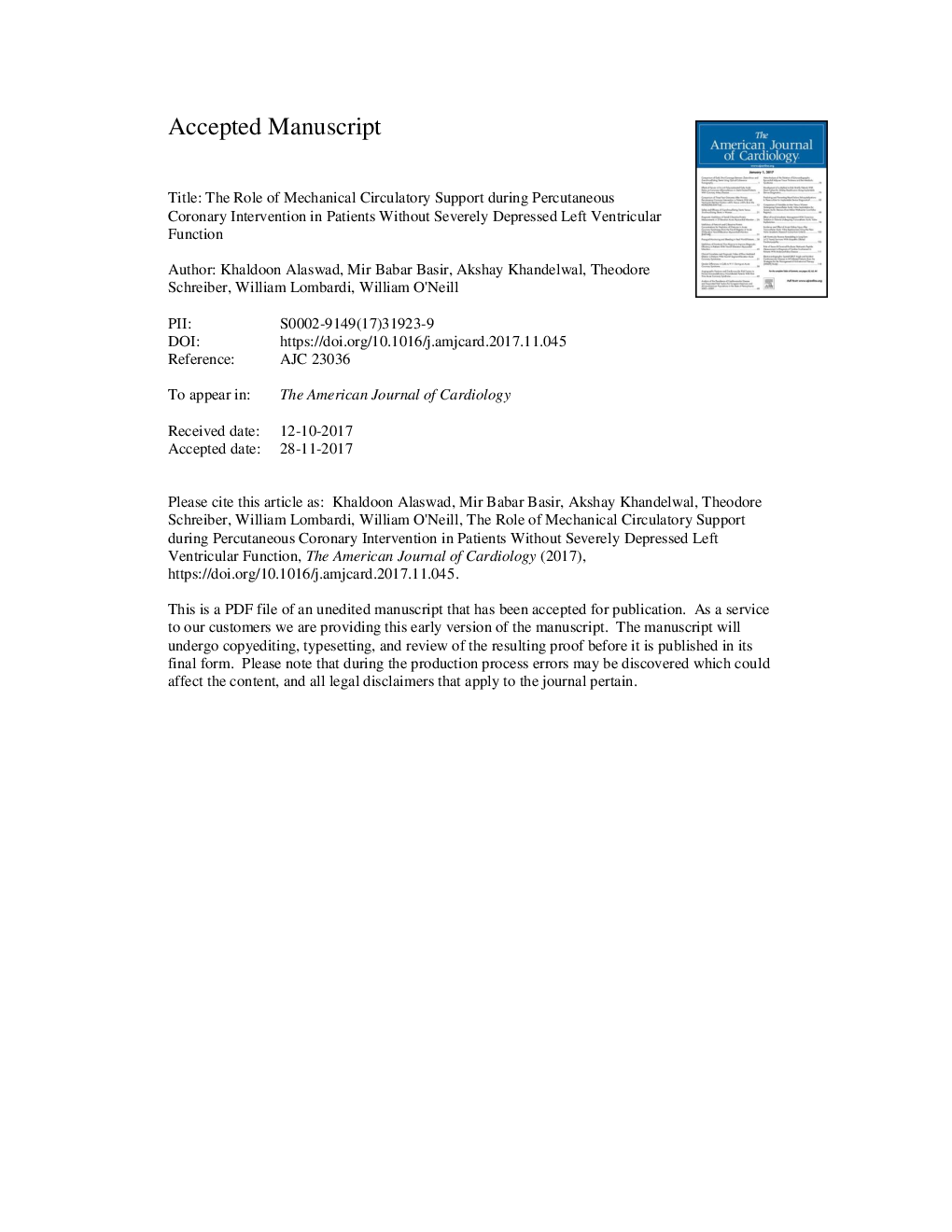| Article ID | Journal | Published Year | Pages | File Type |
|---|---|---|---|---|
| 8651467 | The American Journal of Cardiology | 2018 | 16 Pages |
Abstract
Currently, there are no data on the use of mechanical circulatory support (MCS) in patients without severely depressed left ventricular ejection fraction (LVEF) during high-risk percutaneous coronary intervention (PCI). We analyzed data from the global catheter-based ventricular assist device (cVAD) registry on the clinical use of MCS in high-risk PCI in patients without severely depressed LVEF, defined as LVEFâ>â35%. Patients without cardiogenic shock from the catheter-based ventricular assist device registry, who underwent elective or urgent PCI with an Impella 2.5 or Impella CP, were included. Patients who received MCS after the start of the PCI were excluded. A total of 891 patients were included, of whom 661 had LVEFââ¤â35% and 230 had LVEFâ>â35%. Patients with LVEFâ>â35% compared with patients with LVEFââ¤â35% were older (72.12â±â11.70 years vs 68.68â±â11.01 years; pâ<0.001), had more extensive coronary artery disease with more diseased vessels (1.90â±â0.71 vs 1.73â±â0.79; pâ=â0.005), more multivessel intervention (1.74â±â0.69 vs 1.55â±â0.73; pâ<0.001), and more use of rotational atherectomy (21.21% vs 14.90%; pâ=â0.046), respectively. Additionally, they had a high prevalence of high-risk clinical features such as renal failure (24.89%) and diabetes mellitus (45.37%). Despite these high-risk features, the major adverse cardiovascular and cerebral event rates were favorable overall, with no differences between the 2 groups (3.48% vs 4.54%; pâ=â0.574). Despite having LVEFâ>â35%, this selected group of patients had severe co-morbidities and complex angiographic features; hence, PCI with hemodynamic support was deemed necessary. In addition, PCI with elective MCS was feasible and safe in this patient population.
Related Topics
Health Sciences
Medicine and Dentistry
Cardiology and Cardiovascular Medicine
Authors
Khaldoon MD, Mir Babar DO, Akshay MD, Theodore MD, William MD, William MD,
